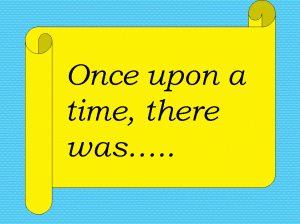by theEmother | Apr 2, 2014 | build a Mother of a Business, exit strategy, Finish Unfinished Business, how to sell a business, Sell Your Business, SELL your Mother of a Business, so you think you're in business, start with the end in mind, the business model

The most interest over the last weeks has been “When Is the Right Time to Sell?”
The answer to that question moves amongst how-long-is-a-piece-of-string and who really knows. Nonetheless, there are a few prime clues that I will explore with you over the next number of posts…
When talking Operations | Delivery | Fulfilment, this is the stuff that a lot of your “Procedures Manual” covers or at least should cover. Whether it be an actual folder or a series of checklists or a series of videos sitting in the business’s own youtube channel, it pretty much covers how, once the business has converted the sale into having to deliver the item/service, what has to happen is mapped out.
In fact, thorough Procedures Manuals covers the whole business, from whoa to go, such as:
1. Overview | Background
2. Services | Products
3. Marketing
4. Databases | Client Relationship Management
5. Sales
6. Policy and Procedures
7. Reporting | Metrics
8. Accounting
9. Business Plan
Initially, the Buyer will not expect to see all that sits behind this list in its entirety upfront. However you do need to have it ready to handover at time of sale. Therefore if you’ve not even commenced this process and you are wanting to put your business on the market, then suggest you start now…
by theEmother | Apr 1, 2014 | build a Mother of a Business, business ideas & thinking, exit strategy, Finish Unfinished Business, how to sell a business, SELL your Mother of a Business, so you think you're in business, start with the end in mind, the business model

The most interest over the last weeks has been “When Is the Right Time to Sell?”
The answer to that question moves amongst how-long-is-a-piece-of-string and who really knows. Nonetheless, there are a few prime clues that I will explore with you over the next number of posts…
OK, so you get a whole lot of enquiries from the lead-generation activities… how good are you at converting them? What is your conversion % rate?
Unknown? Now is the time to start working this out!
By determining the conversion % rate, it indicates what of your marketing initiatives led to the biggest uptake and how well the business does in terms of getting the biggest bang for your marketing buck.
Even better is to be able to show the clear intention of the marketing campaign and how well that converted into sales.
For example, if you run a campaign to have more people sign up to your database, you can check how well that worked by running the numbers on the database.
If you run a campaign to have more people buy your product, you can check how well that worked by running the number of sales made and the number of dollars collected.
If you run a targeted campaign to access particular larger clients, you can check how well that worked by the number of contracts now in place.
If you’re running a scattergun approach and hoping for the best, it’s a harder tale to tell. In fact, it’s not harder to tell but it is harder to convince a Buyer how well anything in particular has actually worked.
This type of approach can then open up a question around how reliant the business is on the owner because if customers only come due to how well they get on with them or because they’ve been coming for years.
This can in turn lead to the question, “what happens when the owner has gone?” Have to be able to answer that one convincingly…
by theEmother | Mar 27, 2014 | build a Mother of a Business, business ideas & thinking, exit strategy, Finish Unfinished Business, how to sell a business, SELL your Mother of a Business, so you think you're in business, start with the end in mind, the business model

The most interest over the last weeks has been “When Is the Right Time to Sell?”
The answer to that question moves amongst how-long-is-a-piece-of-string and who really knows. Nonetheless, there are a few prime clues that I will explore with you over the next number of posts…
The next question is how does the business generate its orders?
In other words, how are the leads generated, how is the marketing done?
We can all describe marketing in different ways. Descriptions range from a specific activity all the way through to everything-is-marketing. For the benefit of what the following means, I define marketing as lead-generation and all that is encompassed in getting the phone to ring, an enquiry to be place, an email to be sent.
To that end, what a Buyer is looking for here is how do you generate interest in the Business and how sustainable is it.
This is where you will list all major activities, both offline and online.
Things like:
- PPC
- SEO
- Advertising
- Magazines/newspapers
- Events
- Webinars
- Sandwich Boards
And of course, you will need to supply proof of how well these strategies are doing and where possible, what revenue was produced.
For online initiatives, your best friend for this is Google Analytics.
Seriously, if you do not have GA on your website, please do so or have your techie do it. It is the only trusted source of stats in the online space so make sure you have it on your site.
For the offline ones, you should be able to highlight a spike in enquiries after an advertisement has run, assuming you are tracking such a thing. If you are not, recommend you start.
by theEmother | Mar 26, 2014 | build a Mother of a Business, business ideas & thinking, exit strategy, Finish Unfinished Business, how to sell a business, SELL your Mother of a Business, so you think you're in business, start with the end in mind

The most interest over the last weeks has been “When Is the Right Time to Sell?”
The answer to that question moves amongst how-long-is-a-piece-of-string and who really knows. Nonetheless, there are a few prime clues that I will explore with you over the next number of posts…
Just suppose we have a Buyer who is expressing interest in the Business you’re offering for sale.
Depending what process they’ve gone through to find the business, lets assume to they know the name already.
Apart from what can be found by googling the business, what else do they want to know?
First up, it’s about the business itself. It’s about the story of today and as well as its history and its future.
Information to include is:
- Date the business commenced
- Why did the business start?
- Who started it?
- What are the key milestones of the business?
- How was the business set up, compared to today?
- Where was it started? Has it moved location?
- What does its future hold?
- What is possible, that you have not ventured in to?
As Andrew Grant (colleague) mentioned repeatedly recently: “you are not your client”. This too applies to selling a business; you are not the Buyer. Therefore think about the information you’re supplying as a means of having a buyer understand it better and not just a display of your opinions about it.
With most of these, 2-3 sentences are enough.
The buyer is certainly not looking for a thesis on the business. Just enough to satisfy initial questions and should further information be required, it can be addressed at a later date.
Why is this a clue?
Once you have thought through and formulated your responses to the above, document them, as the first of the “start with the end in mind” exercises…





